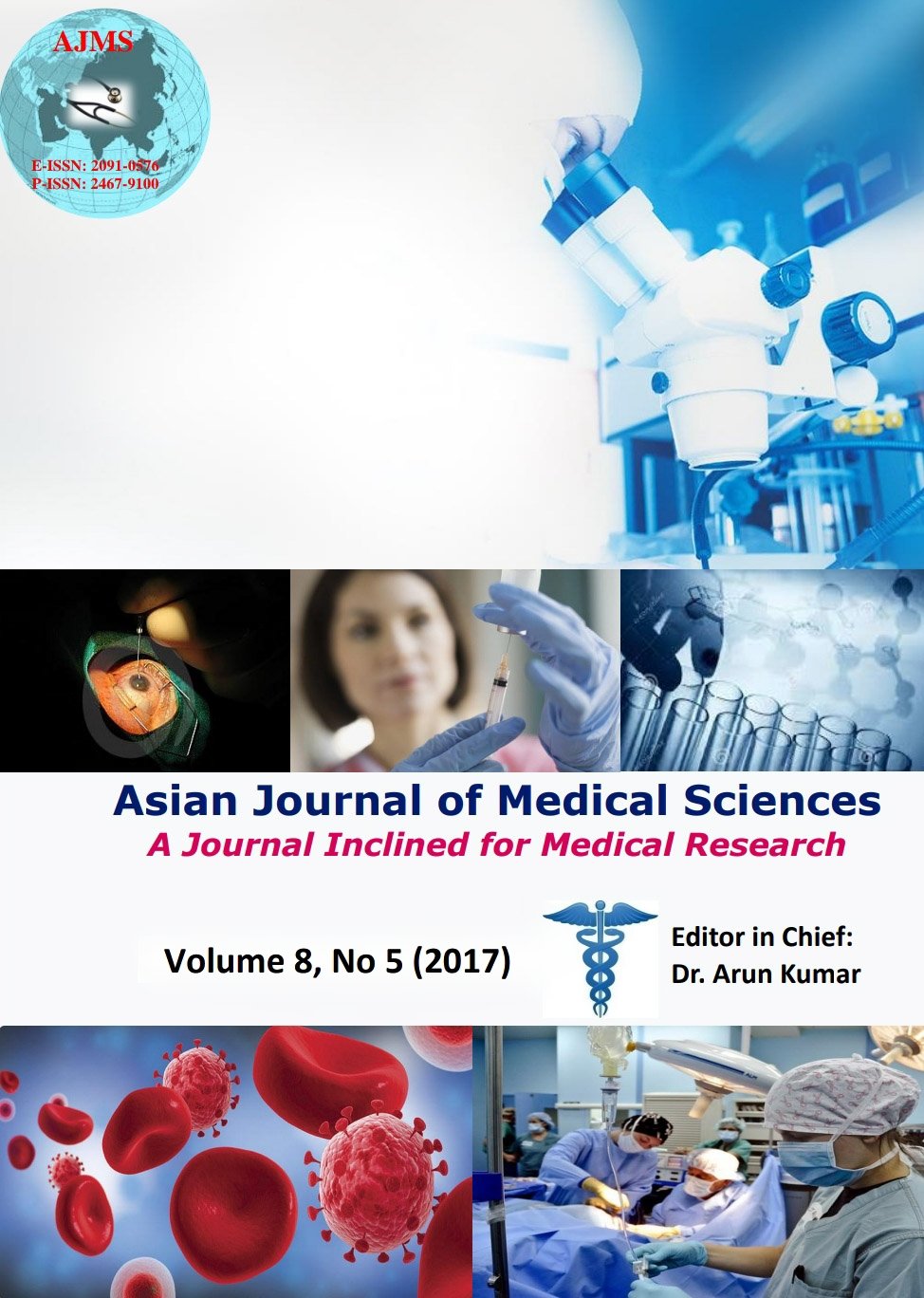Prevalence of anemia and iron deficiency in adolescent school girls of Dharan, Nepal
Keywords:
Anemia, Adolescent, Iron Deficiency, PrevalenceAbstract
Background: The prevalence of anemia in adolescence girls are said to be 42 to 60% in Nepal. Iron deficiency results from prolonged deficit of iron in diet or increased need for iron during a period of intense growth like adolescence. However, the terms anemia, iron deficiency, and iron deficiency anemia are used interchangeably.
Aims and Objective: We aimed to find out the prevalence of anemia and iron deficiency in adolescent school girls of Dharan, Nepal by measuring hemoglobin and serum ferritin levels.
Materials and Methods: This cross-sectional study was done in higher secondary schools, including government and private schools, of Dharan conducted by the Department of Basic and Clinical Physiology, B. P. Koirala Institute of Health Sciences, Dharan, Nepal. A total of 150 adolescent school girls of Dharan was selected by systemic random sampling method. Hemoglobin and ferritin levels were analyzed by cyanmethemoglobin method and immunoturbidimetric assay respectively. Descriptive statistics, paired t-test and chi-square test were used.
Results: Anemic girls were 33.33% (n=50/150). Anemia with iron deficiency was identified in 17.33% girls (n=26/50) and anemia with normal iron level was in 16 % girls (n=24/50). Normal hemoglobin level with iron deficiency was identified in 9% (n= 14/100) girls and normal hemoglobin with normal ferritin level was in 57% (n=86/100) girls.
Conclusions: Prevalence of anemia was less in the adolescent school girls of Dharan, Nepal, than the earlier documented reports in which only half the anemic adolescent girls were iron deficient; suggesting that the remaining other anemic girls had other causes of anemia.
Asian Journal of Medical Sciences Vol.8(5) 2017 22-26
Downloads
Downloads
Published
How to Cite
Issue
Section
License
Authors who publish with this journal agree to the following terms:
- The journal holds copyright and publishes the work under a Creative Commons CC-BY-NC license that permits use, distribution and reprduction in any medium, provided the original work is properly cited and is not used for commercial purposes. The journal should be recognised as the original publisher of this work.
- Authors are able to enter into separate, additional contractual arrangements for the non-exclusive distribution of the journal's published version of the work (e.g., post it to an institutional repository or publish it in a book), with an acknowledgement of its initial publication in this journal.
- Authors are permitted and encouraged to post their work online (e.g., in institutional repositories or on their website) prior to and during the submission process, as it can lead to productive exchanges, as well as earlier and greater citation of published work (See The Effect of Open Access).




